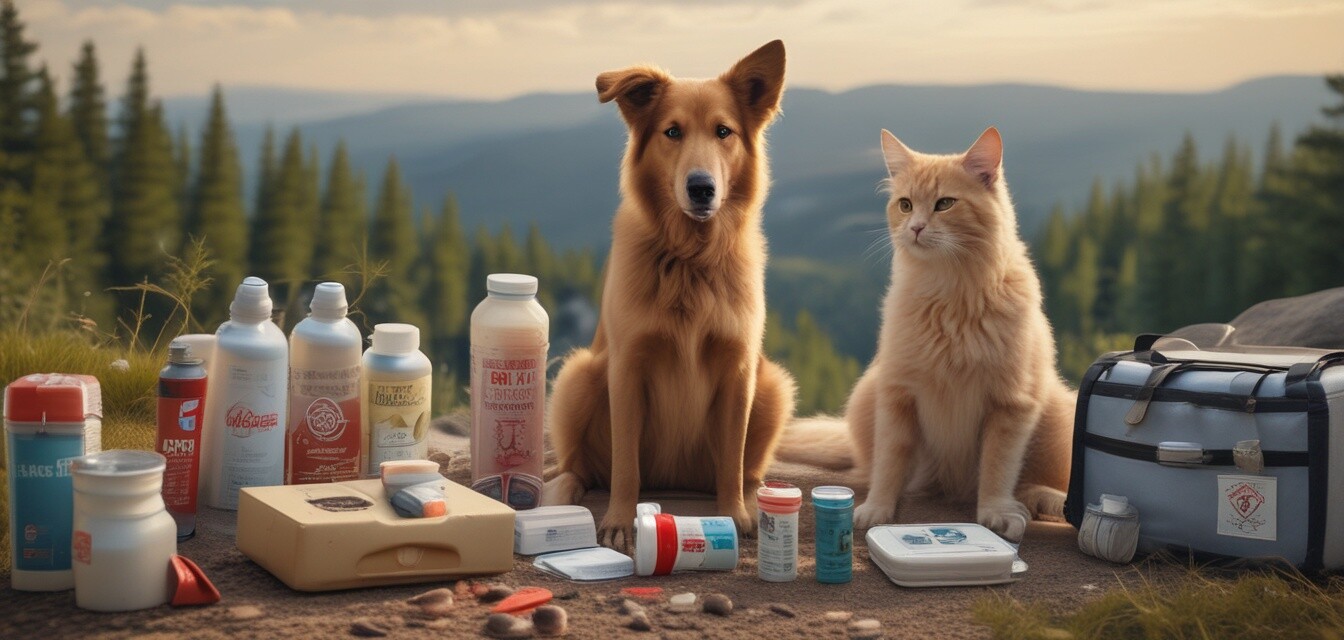
How to Prepare Your Pets for Emergencies
- Plan ahead: Create an emergency plan for your pets.
- Keep supplies ready: Stock up on essential pet emergency supplies.
- Identification: Make sure pets have proper identification at all times.
- Practice safety: Teach your pets to respond to commands in emergencies.
- Stay informed: Keep up with local emergency protocols and pet-friendly shelters.
In the unpredictable realm of outdoor activities and natural disasters, our pets are important family members who require careful planning when it comes to their safety. This guide will provide you with crucial information on preparing your pets for emergencies, ensuring their safety in any situation.
Understanding the Risks
Outdoor emergencies can come in many forms, from sudden severe weather conditions to being lost during a hike. Understanding the potential risks associated with outdoor adventures can help you develop an effective preparedness plan for your pets.
Types of Emergencies
- Natural disasters (earthquakes, hurricanes, floods)
- Wildlife encounters (bears, snakes)
- Lost pets during hikes or outdoor events
- Medical emergencies (injuries, allergies)
Creating a Pet Emergency Plan
The first step in preparing your pet for emergencies is to create a comprehensive emergency plan. Here’s how to get started:
1. Identify Escape Routes
Know the best exit routes from your home and local area in case of evacuation. Make sure your pets are familiar with these routes.
2. Assemble an Emergency Kit
Your pet’s emergency kit should include:
| Item | Description |
|---|---|
| Food and Water | Non-perishable food and enough water for at least three days. |
| First Aid Kit | Including bandages, antiseptic wipes, tweezers, and pet-safe medications. |
| Identification | Collars, tags, microchips, and photos of your pets. |
| Comfort items | Toys, blankets, or items that can calm your pet during stress. |
3. Find Pet-Friendly Shelters
Research local shelters that accept pets in emergencies. Keep a list handy in case you need to evacuate. You can find pet-friendly shelter information on various resources.
Ensuring Your Pets are Identifiable
In an emergency, ensuring that your pets can be quickly identified is critical. This can significantly increase the chances of reuniting if separated.
Microchipping Your Pets
Consider microchipping your pets if they’re not already. It’s a simple process that can provide reliable identification.
Collars and Tags
Ensure your pets wear collars with updated identification tags that include your name and contact information.
Training Your Pets
Training your pets to respond to commands can also be life-saving. Here are some key commands to teach them:
- Come
- Stay
- Leave it
- Heel
Safety Measures when Outdoors
When you take your pets outdoors, especially in unfamiliar environments, always prioritize safety. Here are practical tips:
Beginner Tips for Outdoor Safety
- Keep pets leashed to prevent them from wandering off.
- Stay vigilant about potential hazards such as wildlife and plants.
- Take regular breaks to check on your pet’s condition (hydration, fatigue).
Following Local Protocols
Understand and follow any specific local regulations or protocols related to pets during emergencies. This can include leash laws, licensing, and pet evacuation procedures.
Stay Informed
Subscribe to local alerts and stay updated through official channels, so you receive the latest information regarding natural threats or incidents.
Pros
- Improved safety for you and your pet.
- Better preparedness for outdoor adventures.
- Increases the likelihood of reuniting with your pet if they get lost.
Cons
- Time-consuming preparation.
- Initial cost of supplies and microchipping.
Conclusion
Being well-prepared can mean the difference between safety and danger for your pets in outdoor emergencies. By creating an emergency plan, assembling an essential kit, ensuring proper identification, and training your pets, you can enhance their protection substantially. For more tips on emergency preparedness, visit our Emergency Kit Analyzer Tool to find the best supplies for your needs.
Further Reading
For additional resources related to outdoor safety and preparedness, check out our other articles: